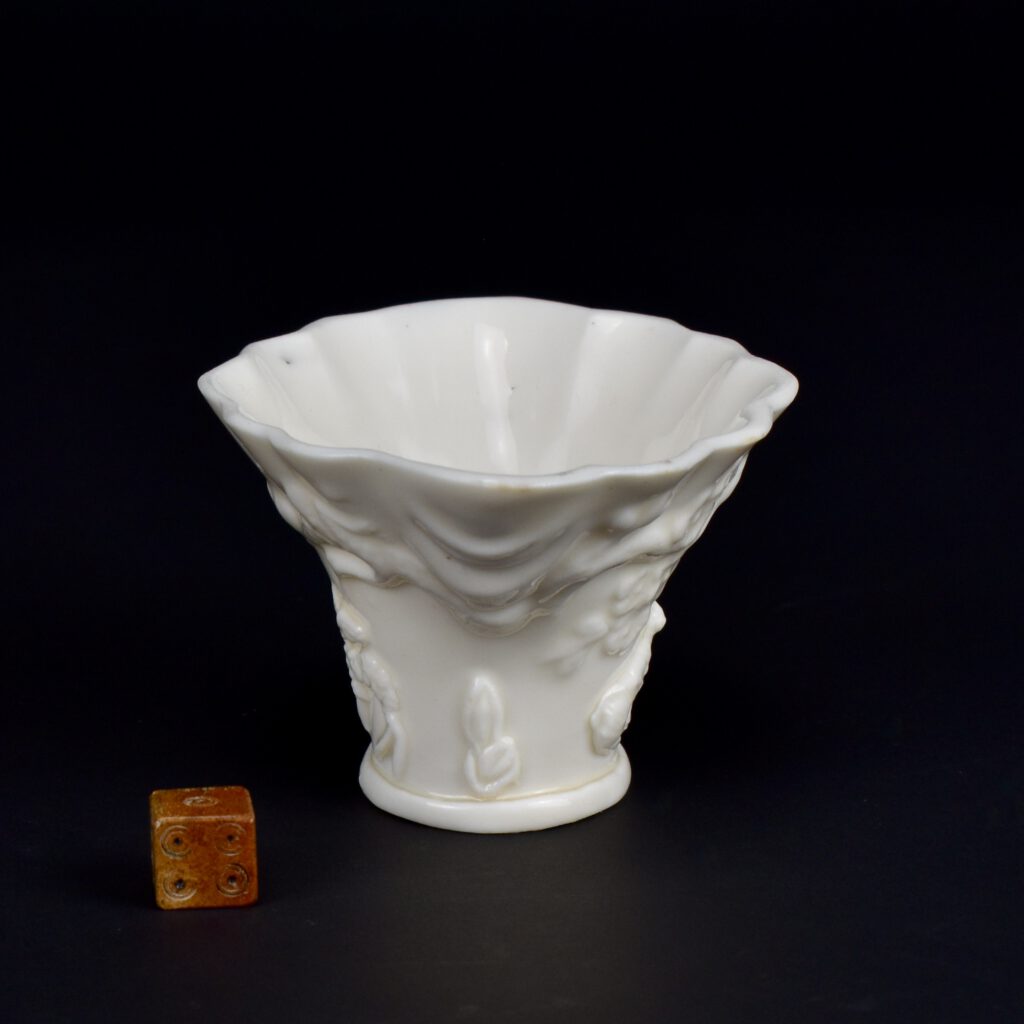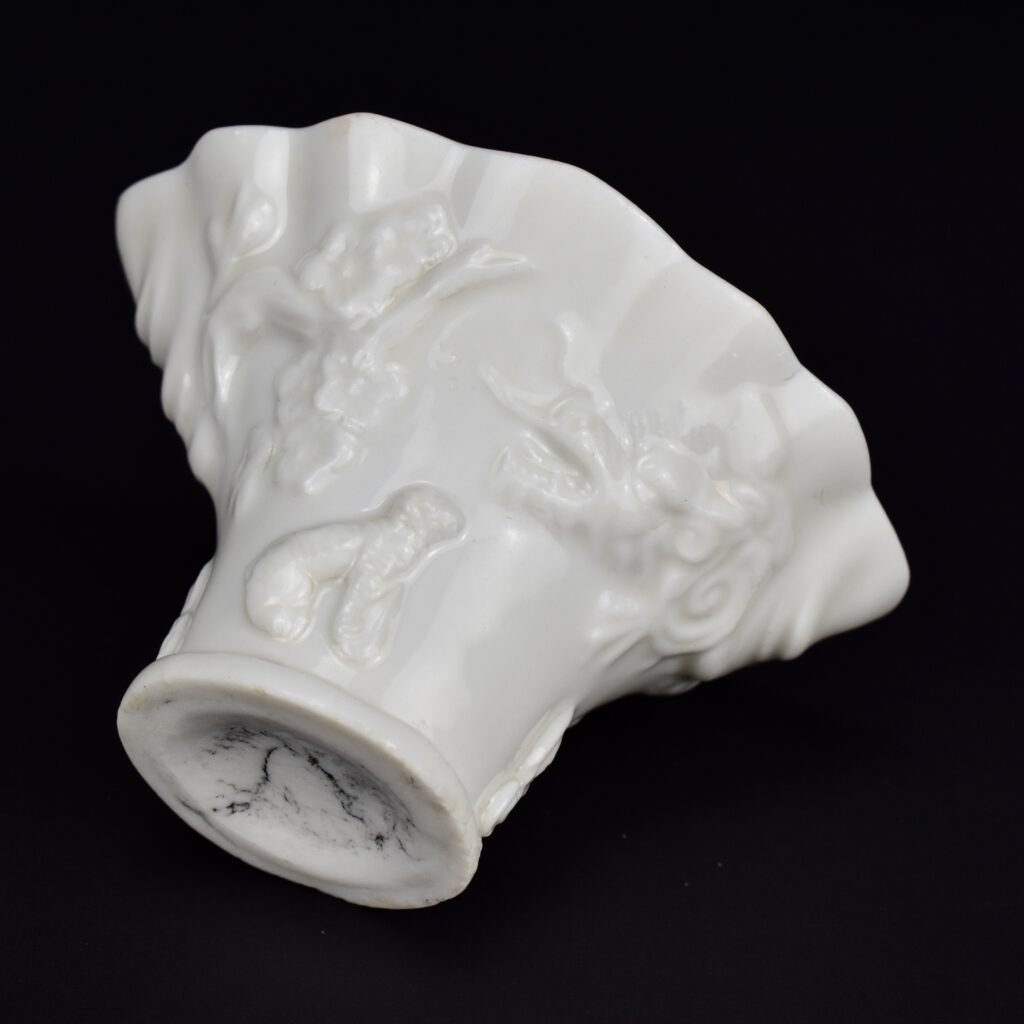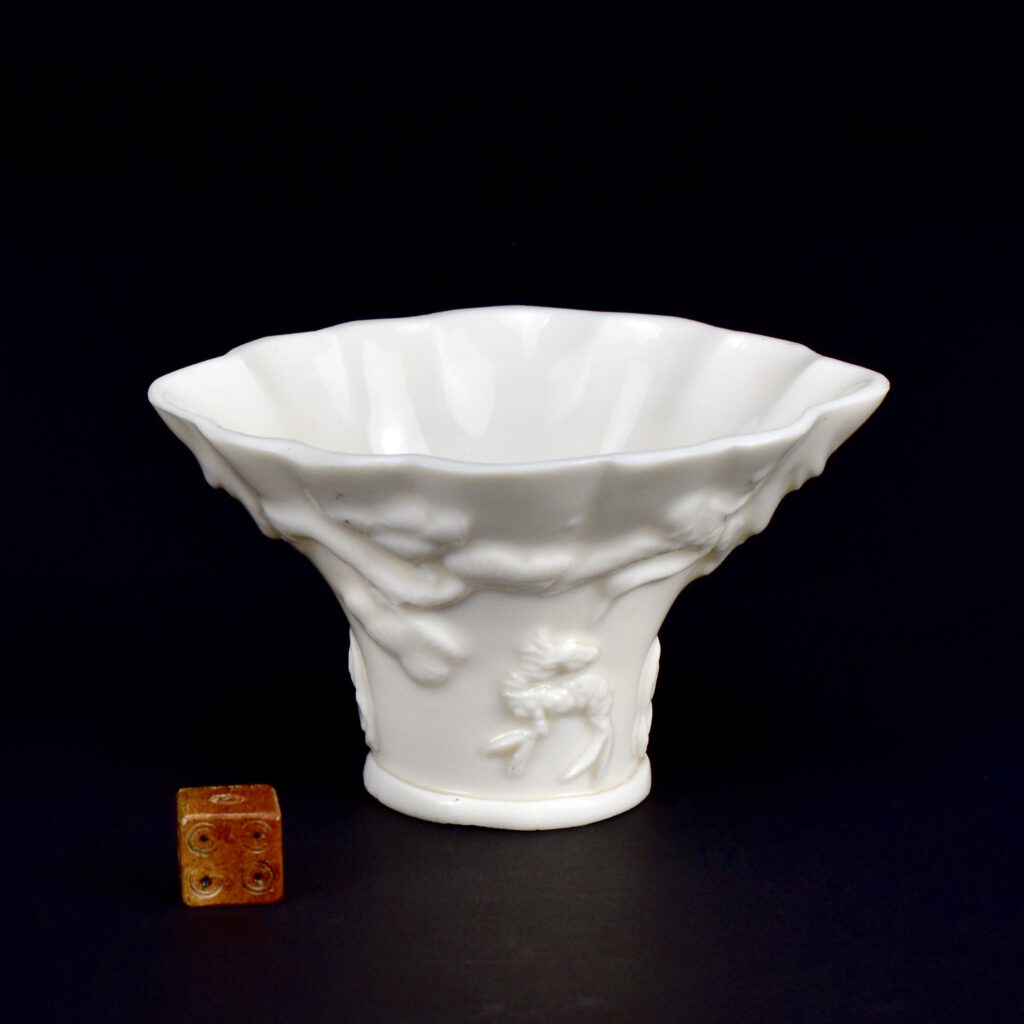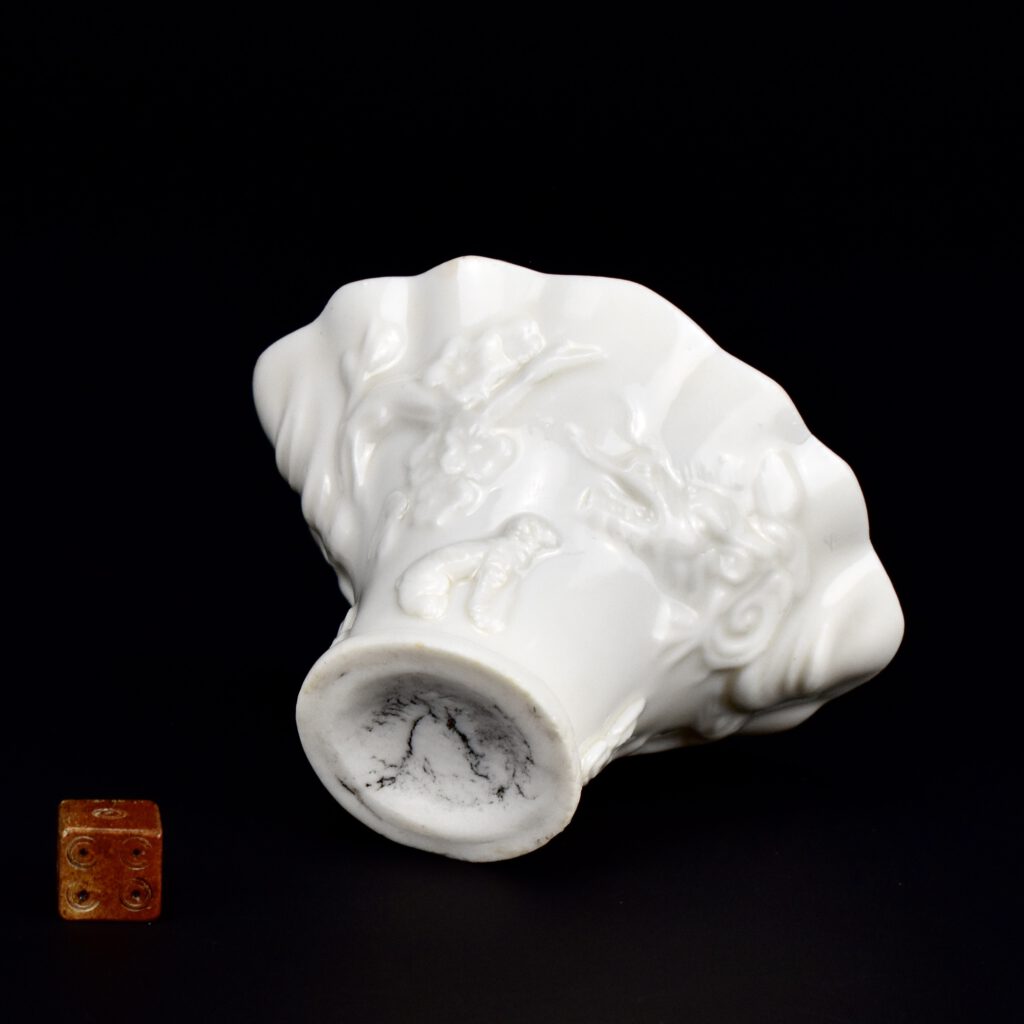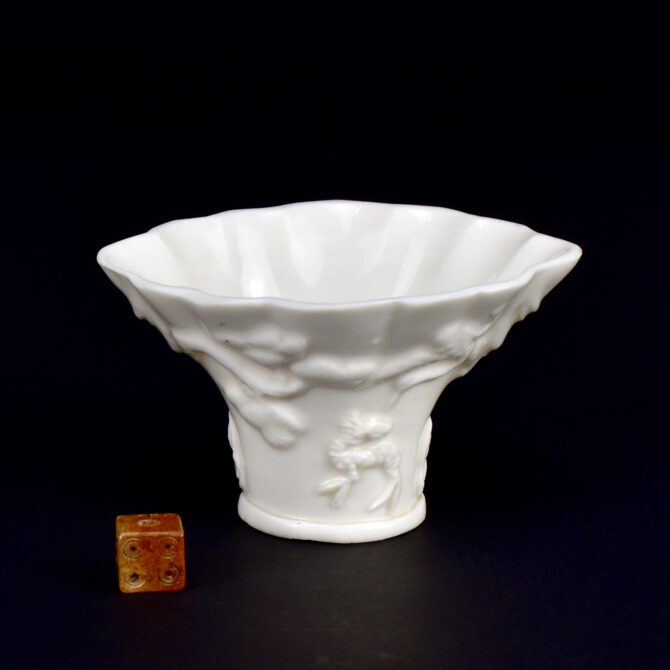
A 17th Century Blanc de Chine Porcelain ‘Libation’ Cup
A 17th Century Blanc de Chine `Libation Cup`, Shunzhi or Kangxi Period c.1640-1700, Dehua Kilns Fujian Province. On one side with moulded decoration depicting a Dragon emerging from clouds and a tiger, applied rather moulded as part of the cup, to the left is a flowering plum (Prunus) tree. The other side with a crane flying above a spotted deer (applied) with a pine tree. The applied decoration is crisp with allot of detail. The base is slightly concave.
See below for more photographs and references.
SOLD
- Condition
- In Perfect Condition. A few tiny burst bubbles.
- Size
- Length 9.3 cm (3.3 inches). Height 5.5 cm (1 1/2 inches)
- Provenance
- N/A
- Stock number
- 27220
Information
A Very Similar 17th Century Blanc de Chine Porcelain Cup
Robert McPherson Antiques Sold Archive - 24250.
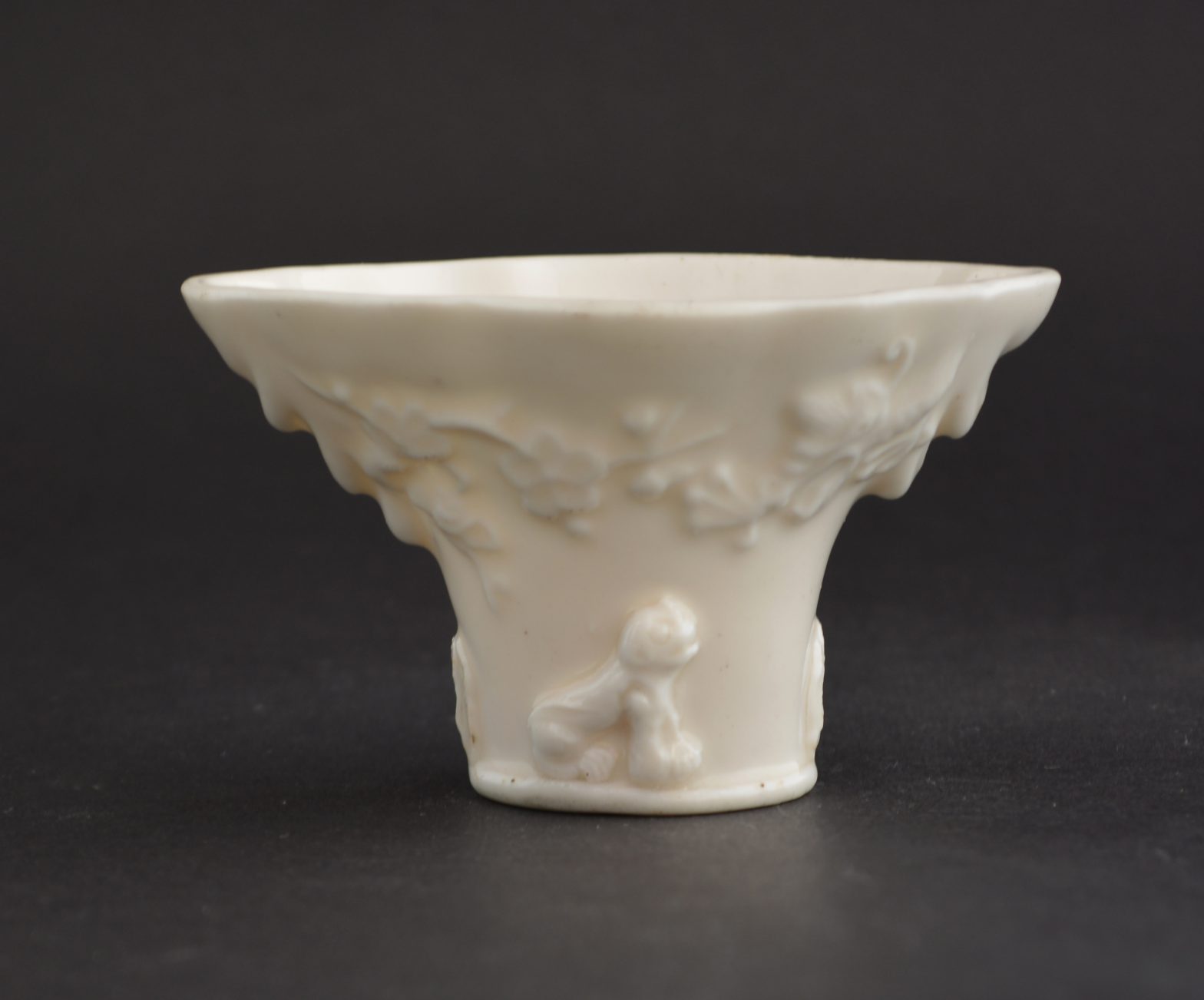
Libation Cups :
Blanc de Chine cups of this type have been traditionally referred to as `Libation Cups`. This is unlikely to be correct but their shape follows that of rhinoceros horn cups which was made locally, it is interesting baring in mind the important powers that the Chinese attach to this material. By having a Blanc de Chine cup of this form some of the powers of real rhinoceros horn might be conveyed to the drinker.
Plum Blossom (Prunus) / Meihua :
Plum Meihua is one of the most important plants in Chinese art. Their flowers grow on knurled old angular branches, the flowers are fragile and pure, so they can be a symbol of vigour in old age as well as purity. The tree is the first to flower after the long hard winter, symbolically it can represent perseverance as well as renewal. This meaning is enhanced by a background of cracked-ice, the design can be seen as representing the end of winter and the beginning of spring with the ice of winter cracking to reveal a new year dawning. Branches of plum blossom convey the `Five Blessings` Meikai wufu, longevity, wealth, health, love of virtue and a peaceful death. The number five, an auspicious number to the Chinese, is taken from the five petals of the plum flower.

